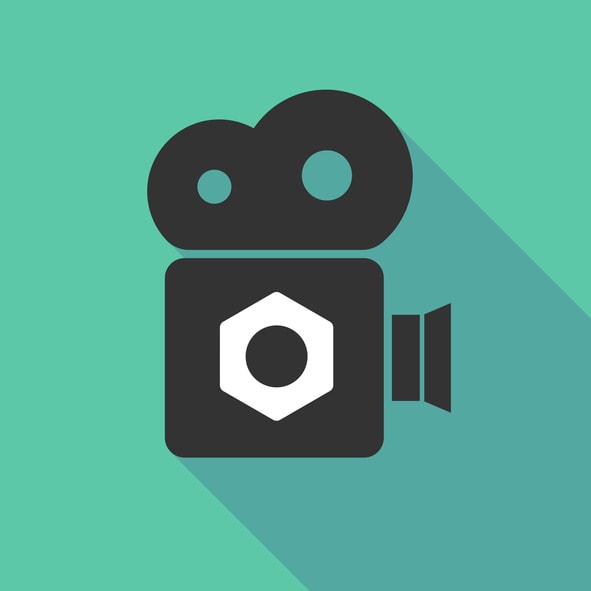Content Delivery Networks: What is the Difference Between a CDN and an eCDN?
Distributing video content can be challenging. Files are large, bandwidth needs are high, and viewers demand smooth, high-quality video. This is where Content Delivery Networks (CDNs) come in.
This blog will look at Content Delivery Networks in some details. Specifically, we’re going to look at the difference between CDNs and eCDNs. An eCDN is a marketing term that has some value, but also some deceptive qualities. These different approaches have different pluses and minuses, which we’ll examine.
By 2021, the live streaming industry is expected to reach $70.05 billion. It’s a significant business opportunity. But it will be an opportunity missed unless businesses are willing to pony up for services from Content Delivery Networks. Let’s dive in and learn more.
What is a CDN?
The term CDN stands for Content Delivery Network. To understand what a CDN does, you have to first understand how traffic moves across the internet. When you visit a website and watch a video, your computer connects to a “server”—a computer designated to deliver (“serve”) content.
The server then sends packets of data over the internet to your computer, which reconstructs the data and plays back the video. The same server, in fact, may be connecting to hundreds, thousands, or even millions of other computers. Too many requests and it may be overloaded. That can make it crash or slow down.
 This is where a CDN comes in. A CDN is a service provided by a company that deploys a network of servers located in various data centers around the world. When you use a CDN to distribute your video content, that data is first sent from your encoder to the CDN network. From there, it’s duplicated and sent to many different servers around the world.
This is where a CDN comes in. A CDN is a service provided by a company that deploys a network of servers located in various data centers around the world. When you use a CDN to distribute your video content, that data is first sent from your encoder to the CDN network. From there, it’s duplicated and sent to many different servers around the world.
This means that the load from a large audience is distributed among many different servers, rather than being concentrated on one or a few of them. Additionally, viewers will be connected to the closest and fastest server based on their geographic location. This speeds up delivery and minimizes buffering problems. Plus, this process automatically scales as your audience size grows.
According to Akamai, “CDNs were specifically built to make the Internet work better, deliver media at scale, and to enable all of the connected experiences you can imagine.”
What is an eCDN?
So how does this compare to an eCDN? Well, the term eCDN stands for “Enterprise Content Delivery Network.” An eCDN is aimed at large businesses or organizations like governments and universities that have a robust internal network (LAN, or Local Area Network).
An eCDN leverages the speed of a LAN connection to alleviate bottlenecks and slowdowns in live video streaming. Generally, this works by caching streaming video at one location: an edge server located inside the corporate or organizational network.
From this one server, data can then be distributed to viewers on the network. This reduces demand on the firewall and reduces the load on the internet connection (WAN, or Wide Area Network).
However, the eCDN model does have some significant drawbacks. In some scenarios, this technology draws data from other devices using a P2P (peer-to-peer) model. In these cases, the quality a viewer receives is dependent on other users on the network. It also places a higher load on each individual device. In some cases, the use of an eCDN can be a marketing term to hide the fact that the CDN being used is itself not very robust.
What are the benefits of using a CDN?
Let’s quickly review the benefits of using Content Distribution Networks.
First, because they reduce bottlenecks in the delivery system, they increase video quality for viewers. Quality is important. One survey showed that 62 percent of viewers are likely to view a brand more negatively if they publish a poor quality video.
Second, they increase start-up time and reduce buffering. This is critical because online videos with a start-up time exceeding even two seconds have significantly higher streaming video abandonment rates, with each incremental second propelling another 6% of viewers to jump ship.
When they watch a poor quality stream, viewers get upset before they even know they’re upset. Their happiness falls and they’re much more likely to leave—and to view your brand negatively.
A CDN also increases redundancy and security in your systems, since there is a whole network of servers delivering content. Those servers are also protected and maintained by the entire technical staff. Scalability is increased as well since you can stream to hundreds, thousands, or even millions with no scaling problems.
Comparing streaming solutions and Content Delivery Networks
 Now, let’s shift gears and look specifically at a few different streaming solutions, CDNs, and combinations.
Now, let’s shift gears and look specifically at a few different streaming solutions, CDNs, and combinations.
CloudFront
CloudFront is a CDN service from Amazon.com. Their network has servers in North America, Europe, Latin America, Asia, and Oceania. They have no servers located in the Middle East, Africa, Russia, or China.
The CloudFront CDN provides a number of tools and services related to live video streaming. However, compared to a dedicated online video platform, the service can be confusing and hard to use. CDN pricing for CloudFront is somewhat complex and depends on the region you’re streaming in.
Akamai
The largest CDN in the world is called Akamai. They’ve been in business for a long time, and have a global network of more than 240,000 servers in more than 130 countries. That network allows them to rapidly and reliably deliver content to users all over the planet.
Akamai does offer some in-house video streaming services. However, it is built around a long-term contract model with high commitment and a very high entry price. Therefore, we recommend looking at an alternative way to access the Akamai CDN (see the section on Dacast, below).
Dacast
Next up is Dacast, our own video live-streaming solution. Dacast partners with the Akamai Content Delivery Networks for the delivery of all live streams and video-on-demand. Even customers on the introductory Dacast plans at $39 per month get to deliver their streams via this top-tier network.
As an online video platform, Dacast offers a variety of tools on top of CDN delivery. These include tools for monetization (paywall and ads insertion), security, API access, chapter markers for VOD, embedding streaming video to your website, and adding custom branding.
Starting $39 per month you get access to top-tier CDNs Akamai and Limelight, with near-instant and unlimited live channel provisioning as well as 24/7 customer support. The recently upgraded fully white-label player support chapter markers for video and include a paywall and pre-roll ads starting at $188 per month. At this price, you get access to ALL the features of the platform including multi-level access, low latency streaming, and real-time analytics (recently released in Beta).
Interested? Call us at any time or sign up here:
IBM Cloud Video
Next, let’s look at IBM Cloud Video. Formerly known as Ustream, the IBM Cloud Video platform provides a range of tools for businesses. These include some tools for monetization, security, and so on. However, you should be aware that many features (API access, white-label, etc.) are restricted to the most expensive Pro ($999/month) and custom plans.
IBM Cloud Video streams are delivered via an internal network of IBM servers, not a discrete CDN business. They also offer an eCDN, which may improve performance for corporate clients, but only partially compensates for not using a top-tier CDN such as Akamai.
Livestream
 The final video streaming platform we’ll look at here is Livestream.
The final video streaming platform we’ll look at here is Livestream.
Livestream, like IBM Cloud Video, uses an internal server network and CDN partners to deliver video. Again, they offer an eCDN with peer-to-peer technology to offer higher quality streaming to corporate and institutional users—but this option may be somewhat redundant if the CDN you use in the first place is powerful enough.
Their service includes embedding, security controls, and custom branding. Like with IBM Cloud Video, many premium features—including Monetization, white-label service, advanced security features, embed restrictions, and API access—start at $999 and up with their Enterprise plans.
Conclusion
Hopefully, this article has introduced you to the topic of Content Delivery Networks and helped you understand the difference between an eCDN and a regular CDN.
If you’re interested in testing out a streaming solution that uses a top-tier Content Delivery Network, such as Akamai, we recommend that you check out Dacast. We offer a 14-day free trial (no credit card required). Click here to try it out. We’d love to help you meet your streaming goals today!
Thanks for reading! We love to hear from our readers, so if you have any questions or experiences to share, let us know in the comments! For regular tips on live streaming, feel free to join our LinkedIn group.
 Stream
Stream Connect
Connect Manage
Manage Measure
Measure Events
Events Business
Business Organizations
Organizations Entertainment and Media
Entertainment and Media API
API Tools
Tools Learning Center
Learning Center Support
Support Support Articles
Support Articles